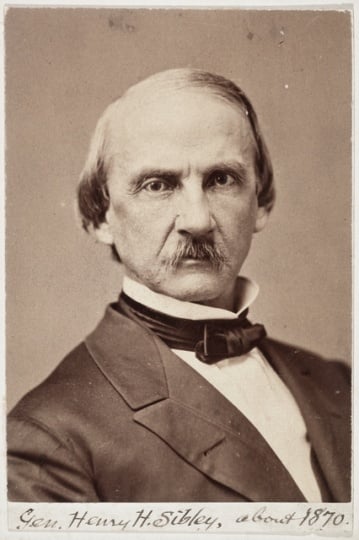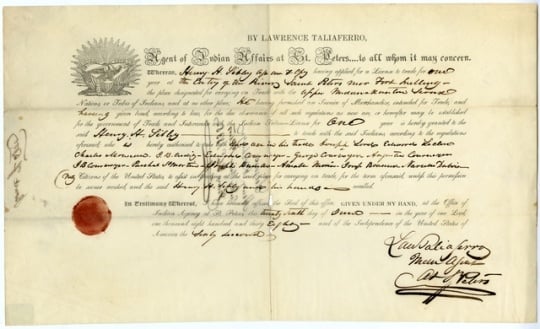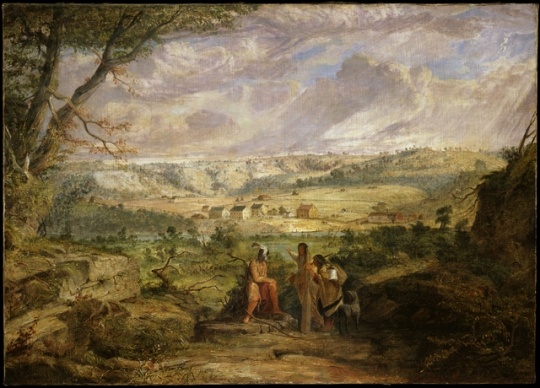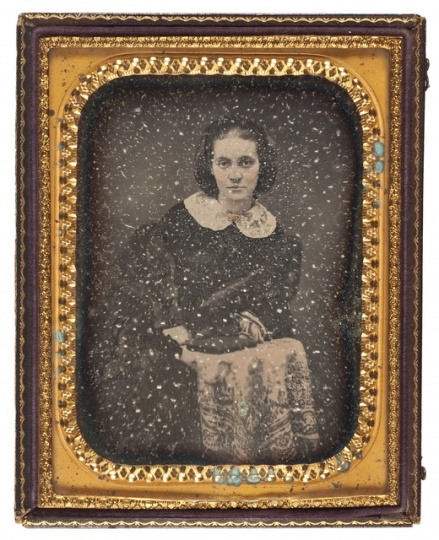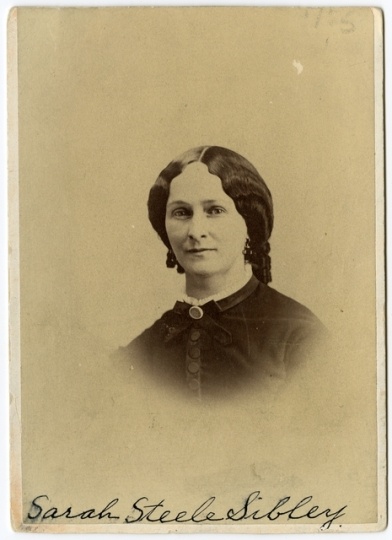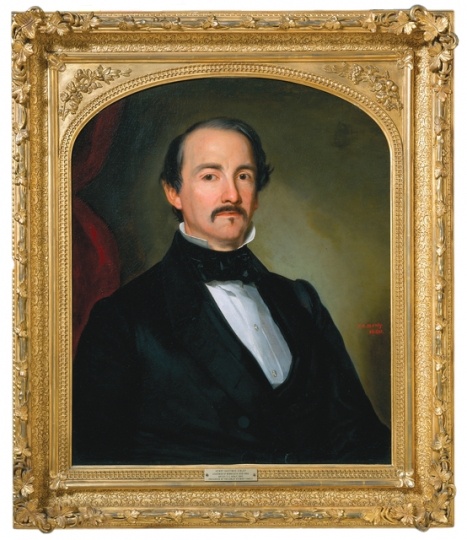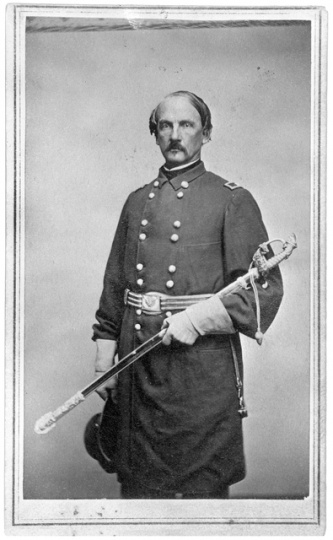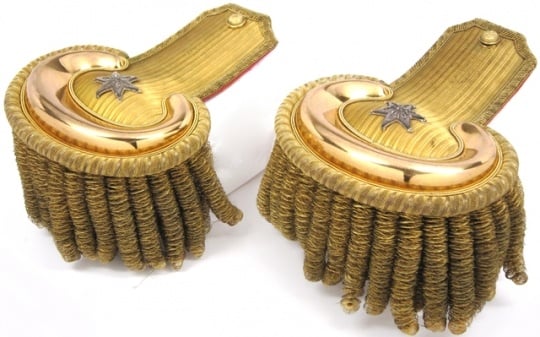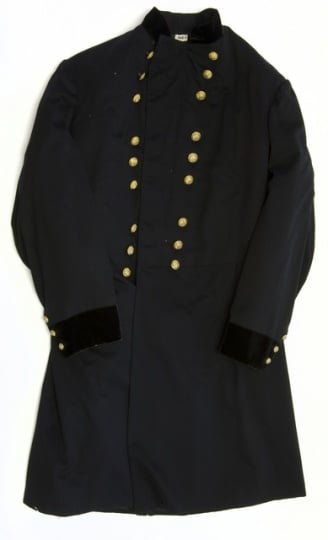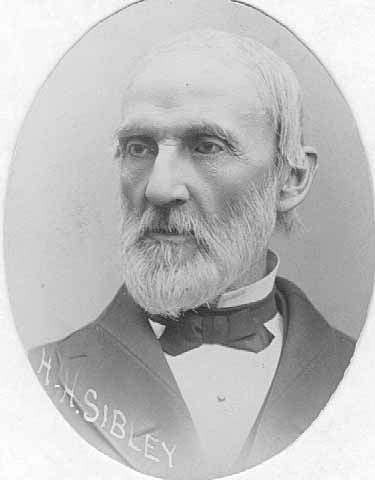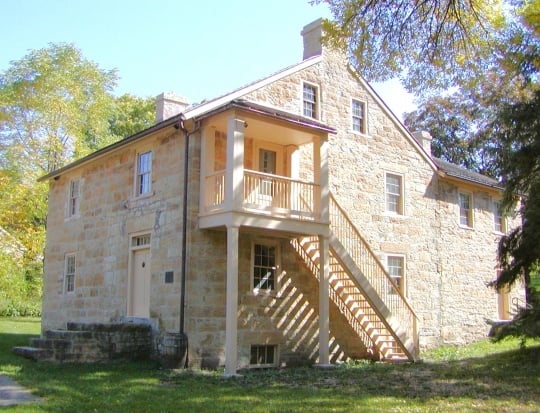Sibley, Henry H. (1811–1891)
Bibliography
Blegen, Theodore, ed. The Unfinished Autobiography of Henry Hastings Sibley Together with a Selection of Hitherto Unpublished Letters from the Thirties. Minneapolis: Voyageur Press, 1932.
http://memory.loc.gov/ammem/umhtml/umhome.html
——— . "Henry H. Sibley, Pioneer of Culture and Frontier Author." Minnesota History 15, no. 4 (December 1934): 382–394.
http://collections.mnhs.org/MNHistoryMagazine/articles/15/v15i04p382-394.pdf
Davis, Jane Spector. Guide to a Microfilm Edition of the Henry Hastings Sibley Papers. St. Paul: Minnesota Historical Society, 1968.
http://www2.mnhs.org/library/findaids/m0164.pdf
Gilman, Rhoda R. Henry Hastings Sibley: Divided Heart. St. Paul: Minnesota Historical Society Press, 2004.
Editor's note: The biography cited above contains an exhaustive bibliography of sources by and about Sibley. Selections from that bibliography are listed here.
M164; M164A
Henry H. Sibley papers, 1815–1932
Manuscript Collection, St. Paul, Minnesota Historical Society
http://www2.mnhs.org/library/findaids/00595.xml
Description: Correspondence, financial records, legal papers, speeches, and miscellany. More than a third of the papers concern the fur trade with the Dakota of the Upper Mississippi Valley from 1815 to 1855 as well as Sibley's interest in the treaties, wars, and welfare of the Dakota.
Records of Governor Henry H. Sibley, 1858–1859
State Archives Collection, St. Paul, Minnesota Historical Society
http://www2.mnhs.org/library/findaids/gov015.xml
Description: Includes accounting records; appointment records; records concerning charges against public officials; letters received; attorney general's opinions; and records relating to pardons and reprieves, among other materials.
Solomon Sibley papers, 1750–1918
Burton Historical Collection, Detroit Public Library
http://dplbibdiv.pbworks.com/f/bhc02399.html
Description: Includes correspondence between Solomon Sibley and his son, Henry H. Sibley, as well as from Henry H. Sibley to other family members and acquaintances.
West, Nathaniel D. D. The Ancestry, Life, and Times of Hon. Henry Hastings Sibley, LL.D. St. Paul: Pioneer Press, 1889.
White, Helen M. Henry Sibley's First Years at St. Peters or Mendota. St. Paul: Turnstone Historical Research, 2002.
Chronology
1811
1828
1829
1834
1837
1841
1842
1844
1849
1851
1857
1858
August 19, 1862
Septem-ber 23, 1862
1867
1891
Bibliography
Blegen, Theodore, ed. The Unfinished Autobiography of Henry Hastings Sibley Together with a Selection of Hitherto Unpublished Letters from the Thirties. Minneapolis: Voyageur Press, 1932.
http://memory.loc.gov/ammem/umhtml/umhome.html
——— . "Henry H. Sibley, Pioneer of Culture and Frontier Author." Minnesota History 15, no. 4 (December 1934): 382–394.
http://collections.mnhs.org/MNHistoryMagazine/articles/15/v15i04p382-394.pdf
Davis, Jane Spector. Guide to a Microfilm Edition of the Henry Hastings Sibley Papers. St. Paul: Minnesota Historical Society, 1968.
http://www2.mnhs.org/library/findaids/m0164.pdf
Gilman, Rhoda R. Henry Hastings Sibley: Divided Heart. St. Paul: Minnesota Historical Society Press, 2004.
Editor's note: The biography cited above contains an exhaustive bibliography of sources by and about Sibley. Selections from that bibliography are listed here.
M164; M164A
Henry H. Sibley papers, 1815–1932
Manuscript Collection, St. Paul, Minnesota Historical Society
http://www2.mnhs.org/library/findaids/00595.xml
Description: Correspondence, financial records, legal papers, speeches, and miscellany. More than a third of the papers concern the fur trade with the Dakota of the Upper Mississippi Valley from 1815 to 1855 as well as Sibley's interest in the treaties, wars, and welfare of the Dakota.
Records of Governor Henry H. Sibley, 1858–1859
State Archives Collection, St. Paul, Minnesota Historical Society
http://www2.mnhs.org/library/findaids/gov015.xml
Description: Includes accounting records; appointment records; records concerning charges against public officials; letters received; attorney general's opinions; and records relating to pardons and reprieves, among other materials.
Solomon Sibley papers, 1750–1918
Burton Historical Collection, Detroit Public Library
http://dplbibdiv.pbworks.com/f/bhc02399.html
Description: Includes correspondence between Solomon Sibley and his son, Henry H. Sibley, as well as from Henry H. Sibley to other family members and acquaintances.
West, Nathaniel D. D. The Ancestry, Life, and Times of Hon. Henry Hastings Sibley, LL.D. St. Paul: Pioneer Press, 1889.
White, Helen M. Henry Sibley's First Years at St. Peters or Mendota. St. Paul: Turnstone Historical Research, 2002.














